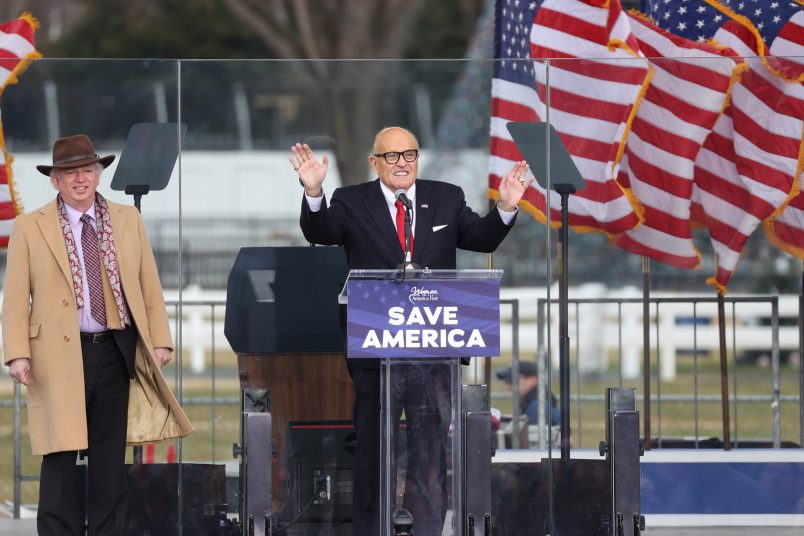A quick followup on the news from last night that the Jan. 6 committee claims it has a good faith basis for believing President Trump broke the law when he pressured Mike Pence to reject the electoral vote count.
As I explained in the Morning Memo, this arose in the context of the committee trying to overcome an attorney-client privilege argument being raised by John Eastman, the Trump adviser who is fighting a committee subpoena for his emails.
The committee is arguing that attorney-client doesn’t apply when the attorney-client relationship is abused to commit crimes. To support its argument, the committee laid out the crimes it alleged Eastman and Trump were committing. That’s the big news.
But it’s worth pointing out that this is probably not a comprehensive recitation of the committee’s legal case against Trump. The issue here is Eastman’s emails. The committee needed to show the crimes Trump and Eastman were committing. Not all the crimes Trump committed, and not all the overt acts Trump and others engaged in during their conspiracy to subvert the election. This was a limited argument for a specific purpose.
Now, as it happens, I think Trump’s pressure campaign against Pence is probably the core of the legal case against Trump. It’s relatively simple and direct. It builds on the legal theories that DOJ has been successfully using to pursue the Jan. 6 rioters. It puts the events of Jan. 6 squarely at the center of the case, rather than say, Trump’s bad acts in Georgia and elsewhere.
But it’s not the entirety of the case. For example, there’s Trump’s dereliction of duty while the Jan. 6 attack was still underway. There may yet be things that happened after Jan. 6 before the inauguration that we’ll learn about. There were the specific state-level shenanigans that Trump was involved in.
I’d urge you to read the entirety of the committee’s filing. It touches on many of these other issues, mostly in passing, but in a way that suggests the committee is building a very compelling conspiracy case.
But that shouldn’t be a surprise! We laid out many of the elements of that case in Jan. 2021, soon after the Capitol attack.
What’s still a surprise, even a shock, is that the Justice Department remains AWOL on the broader conspiracy. There’s a school of thought that DOJ is going low and slow, steadily building a case in under-the-radar ways. I remain skeptical. The balance of the evidence available publicly doesn’t suggest an aggressive DOJ effort to reach to the top of the conspiracy.
The absence of public activity is telling. If DOJ were investigating the case at the pace and with the thoroughness of the Jan. 6 committee, you’d expect to see it running into the kind of legal arguments the committee is now contesting with Eastman and other witnesses and targets. You’d also expect shrieking from those witnesses and targets directed at DOJ about overreach, and playing politics, etc. We’re not seeing any of that.
Merrick Garland was a superb jurist and would have made a fine Supreme Court justice. But he lacks the political savvy to be a wartime consigliere. And so here we are. I’ve never hoped to be as wrong about anything as I hope I am wrong about this.






